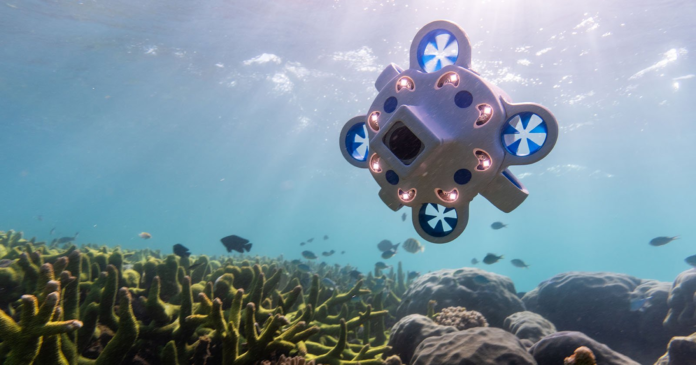Underwater drones are still in their infancy. While filmmakers are already using them to create magnificent art, underwater drones haven’t approached ubiquity for consumers and enthusiasts. However, Australian company Advanced Navigation believes it can change the landscape (or seascape) with its new Hydrus autonomous underwater vehicle (AUV).
The Hydrus AUV, designed to do for underwater exploration what drones have accomplished in the aerial segment, is already making waves in its native Australia. Debuted in 2022, Hydrus has been mapping and monitoring Australia’s endangered coral reefs and searching for shipwrecks.
Underwater drones aren’t new, but Hydrus is swimming the oceans in novel and exciting ways. The AUV is less than half a meter long, significantly smaller than many competitors, and it can record 4K/60p video, better than some beefier underwater drones.
It also does something exceptional: Hydrus explores the ocean without a tether. For aerial drone operators, imagine if the drone had to be always connected to the remote controller. That would significantly limit how and where the drone could be flown. That is the reality for most underwater drones, but not Hydrus.
The underwater drone also has the hardware it needs for fully autonomous navigation. By using inertial navigation tech and clever engineering, Hydrus’ onboard accelerometers and gyroscopes can track where it has traveled since entering the water. It uses sonar to stay a user-controlled distance from the seafloor. It also measures Doppler shift on the sonar echoes to judge its speed.
A person on a pier or vessel can program specific waypoints on a map, toss Hydrus into the ocean, and let it do its thing. In ways unlike many other underwater drones, Hydrus is straightforward to use.
It’s also much cheaper and safer than sending trained divers into the ocean’s depths, especially when monitoring seabed and coral reef health or scouring for shipwrecks.
The ocean remains relatively unexplored. While Hydrus can’t go all the way to the bottom of the sea everywhere on Earth — it can go to a depth of 3,000 meters and up to nine kilometers from its starting point, though, which is remarkable — it can help transform the nature of oceanic exploration.
Unsurprisingly, given the technological and engineering challenges the Advanced Navigation team has overcome, Hydrus is costly. It launched in 2022 at a starting price of $45,000, so it remains far from the “consumer drone” territory. However, in some crucial ways, such as by removing the dreaded tether, Hydrus is pushing underwater drones ever closer to being truly accessible.
Image credits: Advanced Navigation




